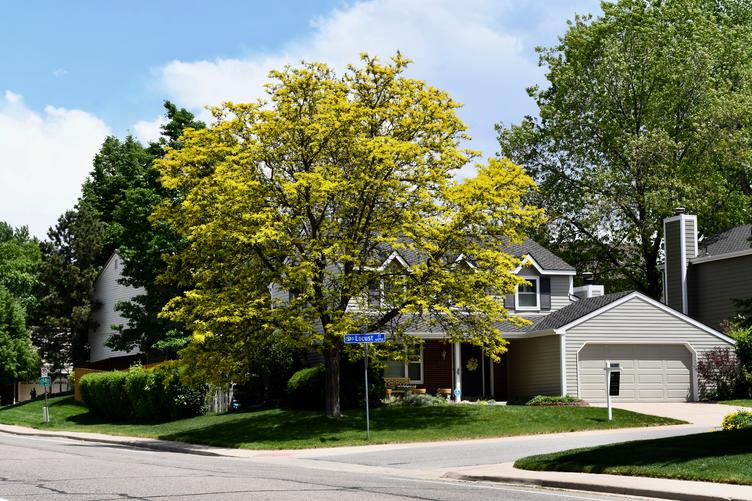Outside of housing and education, safety often tops parents’ priority list when choosing where to live. Fortunately for such families, both violent and property crime in the U.S. has largely been on the decline for decades.
According to the FBI’s Uniform Crime Reporting database, crime rates peaked in 1991 and fell by more than 50 percent between then and 2014. Despite a small uptick in violent offenses between 2014 and 2017, crime in America is near a thirty-year low.
That said, criminal activity is far from the only aspect to consider when evaluating how “safe” an area is. Factors such as excessive drinking, smoking, and other risky behaviors, many of which have been rising, all contribute to a city’s broader safety profile.
Because statistics affecting safety can vary so much between cities, it can be difficult to gauge the comparative safety of urban areas. In order to identify the safest cities in the United States, researchers at online life insurance agency Haven Life compiled statistics on violent crime, property crime, binge drinking, smoking, and accidental deaths. Using these figures, they created a composite score for each of the largest 100 cities. Additionally, Haven Life identified various correlations between crime rates, health metrics, and economic indicators such as poverty and unemployment. Here is what they found:
Key insights
- Cities in California consistently rank as some of the safest in the nation. Based on the analysis, five of the top 10 safest cities in the U.S. are located in the Golden State. The most dangerous cities, on the other hand, are geographically diverse.
- A city’s economic profile is a strong predictor of crime. The analysis reveals strong correlations among poverty and violent crime, as well as unemployment. According to a study conducted by the Bureau of Justice Statistics between 2008 and 2012, residents of less affluent households experienced violence at a rate that’s more than twice that of high-income households. The link between property crime and socioeconomic factors is considerably weaker, as affluent communities are often targets for theft.
- In terms of health outcomes, there is a strong correlation between poverty and the percent of adults that are smokers. This relationship is also true of the unemployment rate and smoking. The connection between socioeconomic status and tobacco use is also well-documented and consistent with the findings presented here. Unlike tobacco use, binge drinking has a slight, and very weak, negative correlation with poverty. Excessive alcohol use appears to impact communities across the socioeconomic spectrum.
The 10 safest American cities
10. Virginia Beach, Virginia
- Overall score: 83.39
- Violent crime rate: 138.8 per 100,000 people
- Property crime rate: 1,951.5 per 100,000 people
- Accidental death rate: 32.9 per 100,000 people
- Binge drinking rate: 18.4% of adults
- Smoking rate: 17.2% of adults
According to the Virginia Beach city government, beachfront tourism brings in $1.49 billion dollars per year. The strong local economy and low poverty rate of just 8 percent help explain the extremely low rate of violent crime—less than half that of the national average.
9. Santa Ana, California
- Overall score: 83.72
- Violent crime rate: 490.8 per 100,000 people
- Property crime rate: 2,100.1 per 100,000 people
- Accidental death rate: 22.9 per 100,000 people
- Binge drinking rate: 14.4% of adults
- Smoking rate: 15.7% of adults
While Los Angeles has many dangerous neighborhoods, its neighboring cities farther down the coast, including Santa Ana, count themselves among the safest in the country. Santa Ana’s unemployment rate is extremely low, measuring in at just 2.7 percent. Additionally, the city is taking steps towards creating oversight committees that could make the area safer for both citizens and law enforcement.
8. Hialeah, Florida
- Overall score: 84.00
- Violent crime rate: 197.3 per 100,000 people
- Property crime rate: 2,200.4 per 100,000 people
- Accidental death rate: 34.8 per 100,000 people
- Binge drinking rate: 14.3% of adults
- Smoking rate: 17.5% of adults
Like some other cities on this list, Hialeah is somewhat of a safe haven in a metropolitan area that has earned somewhat of a bad reputation due to its more dangerous districts. The violent crime rate is just half of the national rate, and the accidental death rate is 30 percent less than the national rate reported by the CDC.
7. Jersey City, New Jersey
- Overall score: 84.28
- Violent crime rate: 504.2 per 100,000 people
- Property crime rate: 1,788.0 per 100,000 people
- Accidental death rate: 24.4 per 100,000 people
- Binge drinking rate: 14.2% of adults
- Smoking rate: 16.6% of adults
While Jersey City is safe across the major metrics considered in our analysis, the city has also been susceptible to catastrophic weather events in the past, such as Hurricanes Irene and Sandy, which will be an important consideration for families and homeowners alike. It should also be noted that the city’s violent crime rate is 30 percent higher than the national average, though property crime and binge drinking are lower.
6. San Jose, California
- Overall score: 84.32
- Violent crime rate: 404.5 per 100,000 people
- Property crime rate: 2,445.8 per 100,000 people
- Accidental death rate: 23.3 per 100,000 people
- Binge drinking rate: 14.8% of adults
- Smoking rate: 11.2% of adults
San Jose is one of the largest and most affluent cities in all of Northern California. The strength of the local economy has helped keep the poverty and unemployment rates well below the national average, accompanied by lower smoking and binge drinking rates. However, violent and property crime rates are both slightly above the national average.
Why life insurance
Life insurance is a financial safety net for your partner, your kids, your life...
Read more5. Gilbert, Arizona
- Overall score: 85.10
- Violent crime rate: 85.4 per 100,000 people
- Property crime rate: 1,384.3 per 100,000 people
- Accidental death rate: 45.0 per 100,000 people
- Binge drinking rate: 16.4% of adults
- Smoking rate: 12.6% of adults
Gilbert is the surprise entry on this list—a former sleepy suburb of the Phoenix metropolitan area that is growing at an incredibly fast pace. In 1990, Gilbert’s population was just 30,000; as of 2017, the town had grown to 242,000. In spite of that rapid expansion, Gilbert has remained an incredibly safe place to live. With just 85 violent crimes per 100,000 people, Gilbert also has one of the lowest violent crime rates on this list.
4. Chula Vista, California
- Overall score: 86.07
- Violent crime rate: 298.8 per 100,000 people
- Property crime rate: 1,435.8 per 100,000 people
- Accidental death rate: 30.1 per 100,000 people
- Binge drinking rate: 17.1% of adults
- Smoking rate: 12.0% of adults
A major hub of the San Diego metropolitan area, Chula Vista is nestled at the center of one of the wealthiest areas in the United States, with below-average poverty and unemployment rates. Like other cities located in California, Chula Vista has fewer smokers per capita than the national average, making it a good option for families that place emphasis on environmental health.
Life insurance for people with a life
You budget online. You invest online. Why not apply for your life insurance online?
Read more3. Plano, Texas
- Overall score: 86.35
- Violent crime rate: 152.5 per 100,000 people
- Property crime rate: 1,764.7 per 100,000 people
- Accidental death rate: 33.7 per 100,000 people
- Binge drinking rate: 16.7% of adults
- Smoking rate: 12.1% of adults
A member of the Dallas-Fort Worth metroplex, Plano is a frequent destination for business travelers. Its status as a business center, widespread affluence, and the presence of a local neighborhood watch program all help make it one of the safest neighborhoods in the country. Just 5.1 percent of the population falls below the poverty level, and compared with many other entries on this list, there is almost no violent crime, making it one of the best cities in the nation for professionals with young families.
2. Fremont, California
- Overall score: 89.25
- Violent crime rate: 183.4 per 100,000 people
- Property crime rate: 2,163.4 per 100,000 people
- Accidental death rate: 26.2 per 100,000 people
- Binge drinking rate: 14.8% of adults
- Smoking rate: 9.3% of adults
Situated in Alameda County on the east side of the San Francisco Bay, Fremont residents are at home in one of America’s safest neighborhoods. The violent crime rate in Fremont is less than half the national average, the smoking rate is just 60 percent of the national rate reported by the CDC, accidental death rates are low and binge drinking is slightly below average. All of these factors help make Fremont one of the safest cities in the nation.
1. Irvine, California
- Overall score: 96.27
- Violent crime rate: 60.9 per 100,000 people
- Property crime rate: 1,310.2 per 100,000 people
- Accidental death rate: 22.9 per 100,000 people
- Binge drinking rate: 15.5% of adults
- Smoking rate: 9.2% of adults
Located at the southernmost end of Los Angeles, Irvine is frequently regarded as the safest city in the nation, and with good reason. The violent crime rate is 84 percent below the national average and the property crime rate is 44.5 percent lower. Smoking rates are also depressed compared to the rest of the nation, with fewer than one in 10 adults identifying as smokers.
Methodology
Population statistics are from the Census Bureau’s 2017 American Community Survey 1-Year Estimates. Accidental death rates are from the Center for Disease Control’s 2016 Compressed Mortality data portal. Property crime and violent crime rates are from the Federal Bureau of Investigation’s 2017 Uniform Crime Report data collection. Measures for smoking and binge drinking are from the Center for Disease Control’s Local Data for Better Health 2017 release. Note that binge drinkers are defined here as men who ingest five or more drinks and women who ingest four or more drinks over the course of two hours once a week.
To identify the safest cities, a composite score was created based on the following factors:
- Violent crime rate: 40%
- Property crime rate: 30%
- Unintentional (accidental) mortality rate: 15%
- Percent of adults who binge drink: 10%
- Percent of adults who smoke: 5%
Only the largest 100 cities by population for which all of the data was available were included in the analysis. The unintentional mortality rate is collected by the CDC at the metro level and was mapped to the corresponding cities.
Haven Life Insurance Agency LLC (Haven Life) conducted this research for educational/informational purposes only. Haven Life is an online life insurance agency offering term life insurance issued by Massachusetts Mutual Life Insurance Company. Haven Life does not provide tax, legal, investment, or housing/real estate advice, and the information in the study should not be relied on as such. You should consult your own tax, legal, investment, and other advisors, as appropriate, before engaging in any transaction.







